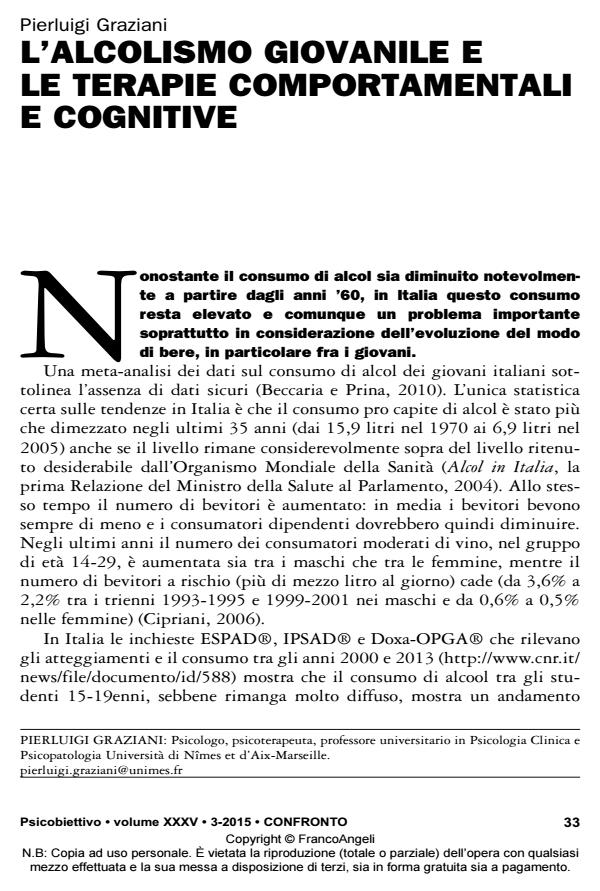L’alcolismo giovanile e le terapie comportamentali e cognitive
Titolo Rivista PSICOBIETTIVO
Autori/Curatori Pierluigi Graziani
Anno di pubblicazione 2016 Fascicolo 2015/3
Lingua Italiano Numero pagine 20 P. 33-52 Dimensione file 146 KB
DOI 10.3280/PSOB2015-003003
Il DOI è il codice a barre della proprietà intellettuale: per saperne di più
clicca qui
Qui sotto puoi vedere in anteprima la prima pagina di questo articolo.
Se questo articolo ti interessa, lo puoi acquistare (e scaricare in formato pdf) seguendo le facili indicazioni per acquistare il download credit. Acquista Download Credits per scaricare questo Articolo in formato PDF

FrancoAngeli è membro della Publishers International Linking Association, Inc (PILA)associazione indipendente e non profit per facilitare (attraverso i servizi tecnologici implementati da CrossRef.org) l’accesso degli studiosi ai contenuti digitali nelle pubblicazioni professionali e scientifiche
I dati sul consumo di alcool mettono in evidenza che i giovani hanno spesso un comportamento a rischio che può tradursi in dipendenza sopratutto all’età adulta. Le terapie comportamentali e cognitive considerano che il comportamento del bere è appreso in seguito a esperienze di piacere con l’alcol. L’utilizzo della bevanda è memorizzato col contesto in cui l’esperienza avviene. Si costruiscono cosi indici che attivano la voglia quando sono presenti. Inoltre, il piacere ottenuto alimenta la ricerca di ripetere quel piacere. Ciò che mantiene il consumo quando questo comincia a provocare conseguenze negative è che spesso permette di diminuire una sofferenza (rinforzo negativo). Inoltre, la presenza di idee facilitanti o scuse facilita la diminuzione del senso di colpa per quel consumo che sarebbe difficile difficile da realizzare date le conseguenze. un premessa alle terapie comportamentali e cognitive è la qualità e la quantità della motivazione. È quindi necessario che il giovane percepisca che gli inconvenienti del consumo e i vantaggi di cambiare sono superiori ai vantaggi del consumo e agli svantaggi del cambiare.
Parole chiave:Alcol; adolescenti; giovani; terapia cognitiva e comportamentale; uso problematico dell’alcol
Pierluigi Graziani, L’alcolismo giovanile e le terapie comportamentali e cognitive in "PSICOBIETTIVO" 3/2015, pp 33-52, DOI: 10.3280/PSOB2015-003003